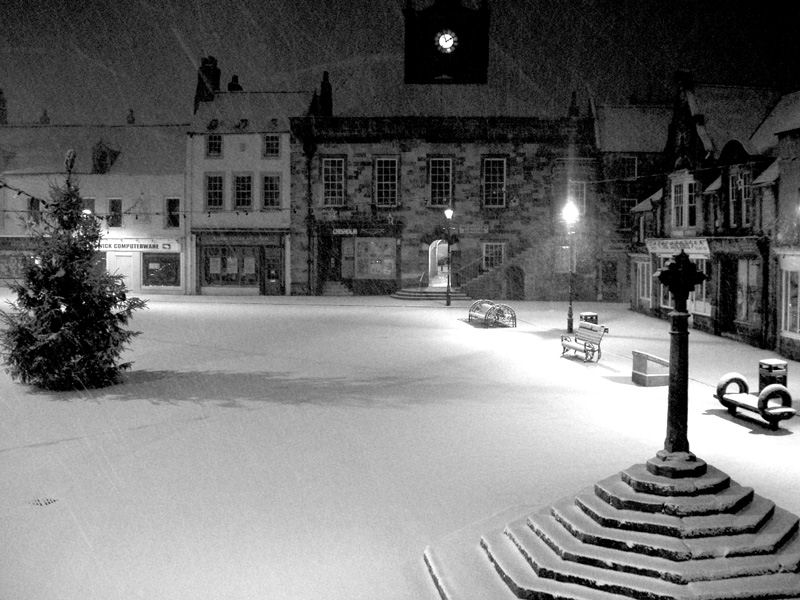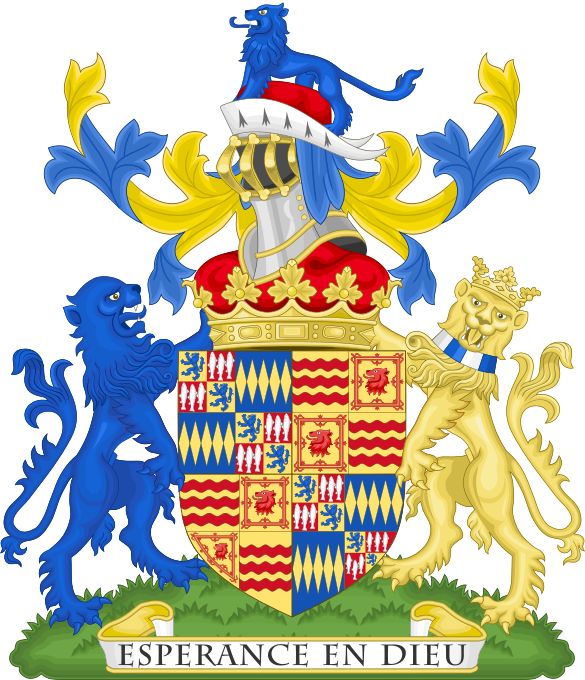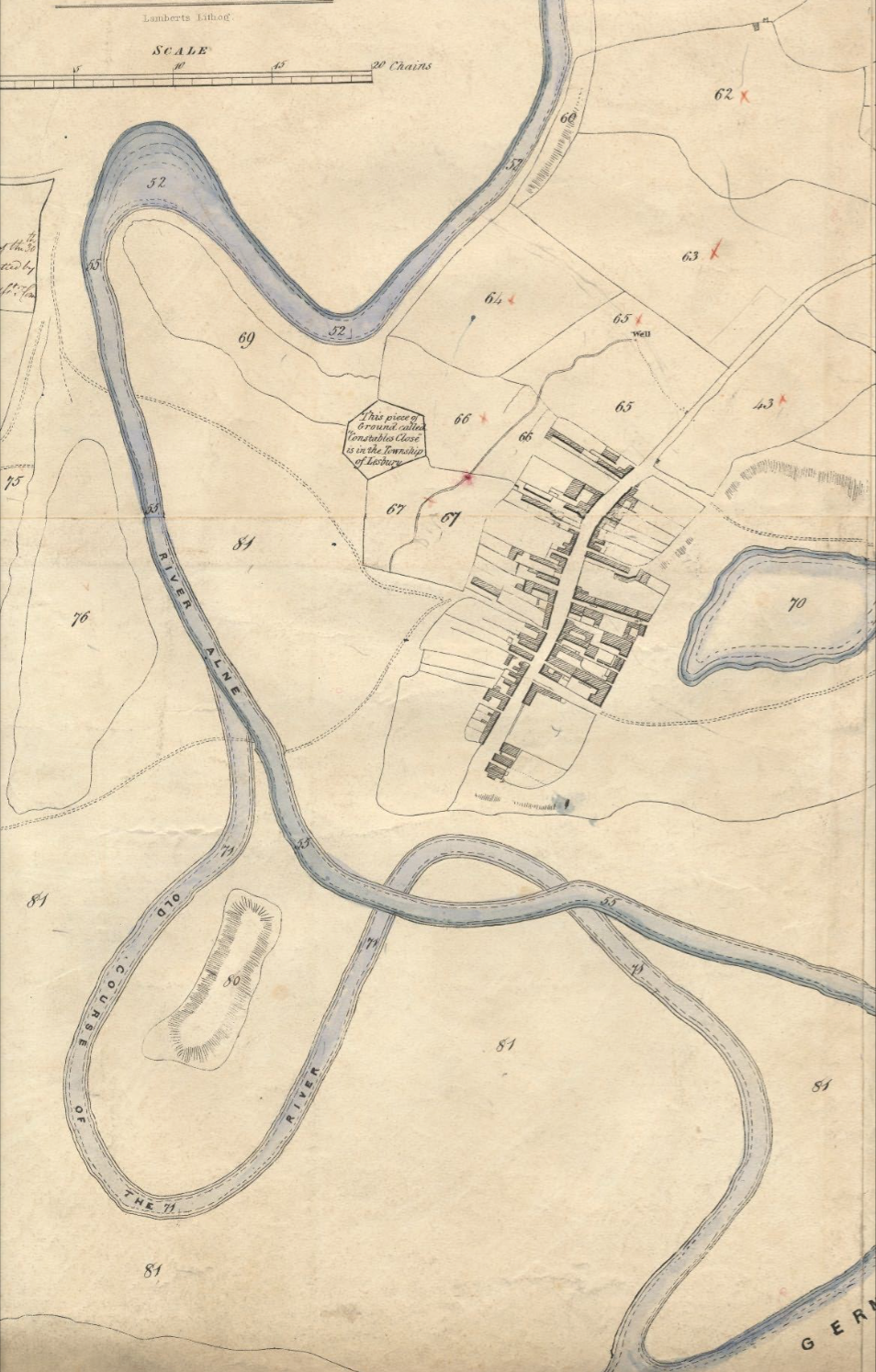|
Alnwick
Alnwick ( ) is a market town in Northumberland, England, of which it is the traditional county town. The population at the 2011 Census was 8,116. The town is south of Berwick-upon-Tweed and the Scottish border, inland from the North Sea at Alnmouth and north of Newcastle upon Tyne; it is sited on the south bank of the River Aln. The town dates to about AD 600 and thrived as an agricultural centre. Alnwick Castle was the home of the most powerful medieval northern baronial family, the Earls of Northumberland. It was a staging post on the Great North Road between Edinburgh and London. Toponymy The name ''Alnwick'' comes from the Old English ''wic'' ('dairy farm, settlement') and the name of the river Aln. History The history of Alnwick is the history of the castle and its lords, starting with Gilbert Tyson (written variously as "Tison", "Tisson" and "De Tesson"), one of William the Conqueror's standard-bearers, upon whom this northern estate was bestowed. ... [...More Info...] [...Related Items...] OR: [Wikipedia] [Google] [Baidu] |
Alnwick Castle In Winter (2013) - Panoramio
Alnwick ( ) is a market town in Northumberland, England, of which it is the traditional county town. The population at the United Kingdom 2011 census, 2011 Census was 8,116. The town is south of Berwick-upon-Tweed and the Scottish border, inland from the North Sea at Alnmouth and north of Newcastle upon Tyne; it is sited on the south bank of the River Aln. The town dates to about AD 600 and thrived as an agricultural centre. Alnwick Castle was the home of the most powerful medieval northern baronial family, the Earl of Northumberland, Earls of Northumberland. It was a staging post on the Great North Road (United Kingdom), Great North Road between Edinburgh and London. Toponymy The name ''Alnwick'' comes from the Old English ''wic'' ('dairy farm, settlement') and the name of the river Aln. History The history of Alnwick is the history of the castle and its lords, starting with Gilbert Tyson (written variously as "Tison", "Tisson" and "De Tesson"), one of William I ... [...More Info...] [...Related Items...] OR: [Wikipedia] [Google] [Baidu] |
Northumberland
Northumberland ( ) is a ceremonial counties of England, ceremonial county in North East England, on the Anglo-Scottish border, border with Scotland. It is bordered by the North Sea to the east, Tyne and Wear and County Durham to the south, Cumbria to the west, and the Scottish Borders council area to the north. The town of Blyth, Northumberland, Blyth is the largest settlement. Northumberland is the northernmost county in England. The county has an area of and a population of 320,274, making it the least-densely populated county in England. The south-east contains the largest towns: Blyth, Northumberland, Blyth, Cramlington, Ashington, Bedlington, and Morpeth, Northumberland, Morpeth, the last of which is the administrative centre. The remainder of the county is rural, the largest towns being Berwick-upon-Tweed in the far north and Hexham in the south-west. For local government purposes Northumberland is a Unitary authorities of England, unitary authority area. The county Histo ... [...More Info...] [...Related Items...] OR: [Wikipedia] [Google] [Baidu] |
Alnwick Castle
Alnwick Castle () is a castle and country house in Alnwick in the English county of Northumberland. It is the seat of the Ralph Percy, 12th Duke of Northumberland, 12th Duke of Northumberland, built following the Norman Conquest and renovated and remodelled a number of times. It is a Grade I listed building now the home of Ralph Percy, 12th Duke of Northumberland and his family. In 2016, the castle received over 600,000 visitors per year when combined with adjacent attraction the Alnwick Garden. History Alnwick Castle guards a road crossing the River Aln. Ivo de Vesci, Baron of Alnwick, a nobleman from Vassy, Calvados in Normandy, erected the first parts of the castle in about 1096. Beatrix de Vesci, the daughter of Yves de Vescy, married the Constable of Chestershire and Knaresborough, Eustace fitz John. By his marriage to Beatrix de Vesci he gained the baronies of Malton, North Yorkshire, Malton and Alnwick. The castle was first mentioned in 1136 when it was captured by King ... [...More Info...] [...Related Items...] OR: [Wikipedia] [Google] [Baidu] |
Alnwick Abbey
Alnwick Abbey was founded as a Premonstratensian monastery in 1147 by Eustace fitz John near Alnwick, England, as a daughter house of Newhouse Abbey in Lincolnshire. It was dissolved in 1535, refounded in 1536 and finally suppressed in 1539. The Alnwick Abbey site is located just within Hulne Park, on the bank of the River Aln. The only visible remnant is the impressive 14th-century gatehouse, a Grade I listed building. Founding Eustace fitz John became lord of the barony of Alnwick by his marriage with Beatrix, the daughter of Ivo de Vesci. He endowed it amply. The charter of foundation, included in a confirmatory charter of Henry Percy, Earl of Northumberland, is addressed to William of St. Barbara, Bishop of Durham. Among the souls for whose benefit it was erected, is mentioned that of Ivo de Vesci. From Dugdale's authority, it is said that the first of that order came to settle at Alnwick in the year 1147. The order first came over in 1143, and settled at Newhouse, ... [...More Info...] [...Related Items...] OR: [Wikipedia] [Google] [Baidu] |
House Of Percy
The Percy family is an old English nobility, English noble family. They were among the oldest and most powerful noble families in Northern England for much of the Middle Ages. The noble family is known for its long rivalry with the House of Neville, another family powerful in northern England during the 15th century. The feud between the two families, known as the Percy–Neville feud, Percy-Neville feud led to the Wars of the Roses, at the time known as the Civil Wars, in England. The House of Percy descends from William de Percy (d. 1096), a Norman who crossed to England after William the Conqueror in early December 1067. William de Percy was created as the 1st English feudal barony, feudal baron of Topcliffe, North Yorkshire, Topcliffe in Yorkshire.Sanders, I.J., ''English Baronies'', Oxford, 1960, p.148 He was rebuilding York Castle in 1070. The Percy surname derives from the Manorialism, manor of Percy-en-Auge in Normandy, the home of the Percy family at the time of the No ... [...More Info...] [...Related Items...] OR: [Wikipedia] [Google] [Baidu] |
Battle Of Alnwick (1174)
The Battle of Alnwick (1174) is one of two battles fought near the town of Alnwick, in Northumberland, England. In the battle, which took place on 13 July 1174, William I of Scotland, also known as William the Lion, was captured by a small English force led by Ranulf de Glanvill. Background William had inherited the title of Earl of Northumbria in 1152. However, he had to give up this title to King Henry II of England in 1157. He spent much of his reign trying to regain his lost territory. In 1173, whilst Henry II was occupied in fighting against his sons in the Revolt of 1173–1174, William saw his opportunity and invaded Northumbria. He advanced on Newcastle but found the partly built stone castle too strong to allow him to take the town. He also attacked Prudhoe Castle but found the defences too strong. Unwilling to undertake a lengthy siege, William returned to Scotland. In 1174, William again invaded Northumbria with an even larger army that included a contingent of Fl ... [...More Info...] [...Related Items...] OR: [Wikipedia] [Google] [Baidu] |
Battle Of Alnwick (1093)
The Battle of Alnwick is one of two battles fought near the town of Alnwick in Northumberland, England. In the battle, which occurred on 13 November 1093, Malcolm III of Scotland, later known as Malcolm Canmore, was killed together with his son Edward by an army of English knights led by Robert de Mowbray. Background At the time that William II of England, known as William Rufus, came to power, the control of northern Northumbria was still an open question. William set about rectifying this by appointing strong barons who would control the border and prevent Scottish incursions. It appears that Malcolm Canmore had ambitions regarding both Cumbria and Northumbria, and in May 1091 he invaded Northumbria and besieged Durham. William Rufus was forced to lead a large army north to meet this threat. He advanced into Scotland with Malcolm retreating in front of his army. Eventually a truce was negotiated and William withdrew. The following year William strengthened his position in C ... [...More Info...] [...Related Items...] OR: [Wikipedia] [Google] [Baidu] |
Hulne Priory
Hulne Priory, Hulne Friary or Hulne Abbey was a friary founded in 1240 by the Carmelites or 'Whitefriars'. It is said that the Northumberland site, quite close to Alnwick, was chosen for some slight resemblance to Mount Carmel where the order originated. Substantial ruins survive, watched over by the stone figures of friars carved in the 18th century. It is a sign of the unrest felt in this area so near to the border with Scotland that the priory had a surrounding wall and in the 15th century a pele tower was erected. Changes were made at the Dissolution of the Monasteries when the Percy family took control. William II de Vesci was instrumental in bringing the Carmelites from the Crusader states to England by establishing Hulne Priory, located 2 miles northwest of Alnwick. The priory is situated in Hulne Park, a walled park covering several thousand acres which belongs to the Duke of Northumberland and is close to Alnwick Castle. Originally a hunting park, and still used b ... [...More Info...] [...Related Items...] OR: [Wikipedia] [Google] [Baidu] |
Earl Of Northumberland
The title of Earl of Northumberland has been created several times in the Peerage of England and of Great Britain, succeeding the title Earl of Northumbria. Its most famous holders are the House of Percy (''alias'' Perci), who were the most powerful noble family in Northern England for much of the Middle Ages. The heirs of the Percys, via a female line, were ultimately made Duke of Northumberland in 1766, and continue to hold the earldom as a subsidiary title. History Percy family William de Percy, 1st Baron Percy, was in the train of William I. After arriving in England following the Harrying of the North (1069–70), he was bestowed modest estates in Yorkshire by Hugh d'Avranches. However, by the reign of Henry II the family was represented by only an heiress, Agnes de Percy (died 1203) following the death of the third feudal baron. As her dowry contained the manor of Topcliffe in Yorkshire, Adeliza of Louvain, the widowed and remarried second wife of Henry I, arran ... [...More Info...] [...Related Items...] OR: [Wikipedia] [Google] [Baidu] |
Alnmouth
Alnmouth () is a coastal village in Northumberland, England, situated east-south-east of Alnwick. The population of the civil parish at the 2001 Census was 562, reducing to 445 at the 2011 Census. Located at the mouth of the River Aln, the village had a port supporting a small fishing industry and engaging in national and international trade. It was for a time a leading north-east centre for the export of grain and other foodstuffs, especially to London, and specialised in the import of timber and slate. These activities to some extent shaped the village, as granaries were constructed to store grain, and sawmills and a boatyard established to process wood and build ships. Port activities declined at the end of the 19th century, in part because of the deterioration of the port due to the shifting and silting of the river estuary, in part as trade transferred to the railways. A notable change in the course of the river during a violent storm in 1806 resulted in the loss of the re ... [...More Info...] [...Related Items...] OR: [Wikipedia] [Google] [Baidu] |
River Aln
The River Aln () runs through the county of Northumberland in England. It rises in Alnham in the Cheviot Hills and discharges into the North Sea at Alnmouth on the east coast of England. The river gives its name to the town of Alnwick and the villages of Alnmouth and Alnham. For part of its route, directly upstream of Alnwick, the river flows through Hulne Park. Etymology The meaning of the name ''Aln'' is uncertain, but it is generally seen as a Hydronym, river-name of the ''Alaunus, Alaunos'' or ''Alaunā''. Names of this type could derive from the Celtic root *''al''- ('feed, raise, nurture') or *''alǝ''- (to wander'), or else from the Common Brittonic, Brittonic element ''*al-'', "shining, bright" (Welsh language, Welsh ''alaw'', 'waterlilly'). Another suggestion is that the name is derived from the Brittonic root ''*Alaun-'' (‘holy one’ or ‘mighty one’). History The Aln is first mentioned in the Geography (Ptolemy), Geography of Ptolemy, a 2nd Century AD Roman ... [...More Info...] [...Related Items...] OR: [Wikipedia] [Google] [Baidu] |
Hulne Park
Hulne Park is the only one remaining of the three park A park is an area of natural, semi-natural or planted space set aside for human enjoyment and recreation or for the protection of wildlife or natural habitats. Urban parks are urban green space, green spaces set aside for recreation inside t ...s that once surrounded Alnwick Castle in Northumberland, providing wood and meat for the Percy family, the Duke of Northumberland, Dukes of Northumberland. The park is walled, and was landscaped by Capability Brown. It is the site of Hulne Priory, Brizlee Tower and Alnwick Abbey, although access to the latter is no longer available to the general public. A cave called the Nine Year Aud Hole is found within the park; its entrance is guarded by a Grade-II-listed, probably 18th-century, statue of a White Friar. The park is open to walkers only, without dogs, between 11 a.m. and sunset most days of the year; it may occasionally be closed to the public for private events to take ... [...More Info...] [...Related Items...] OR: [Wikipedia] [Google] [Baidu] |




